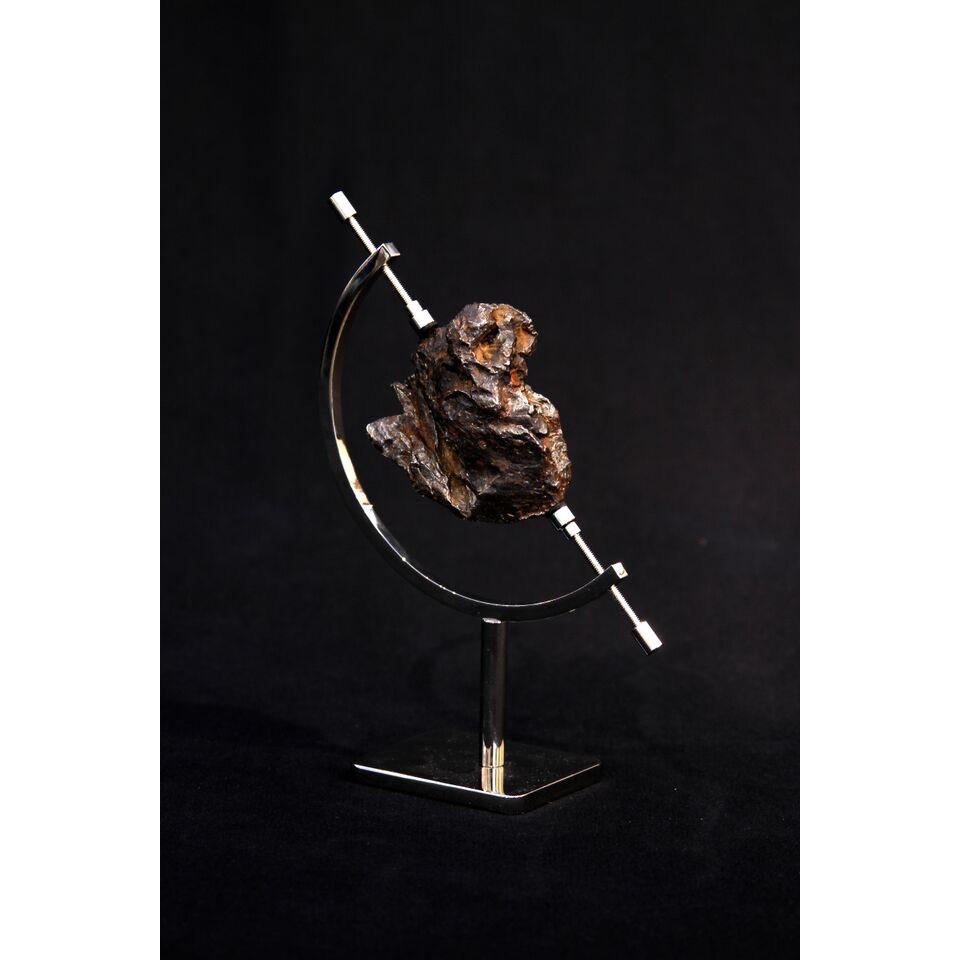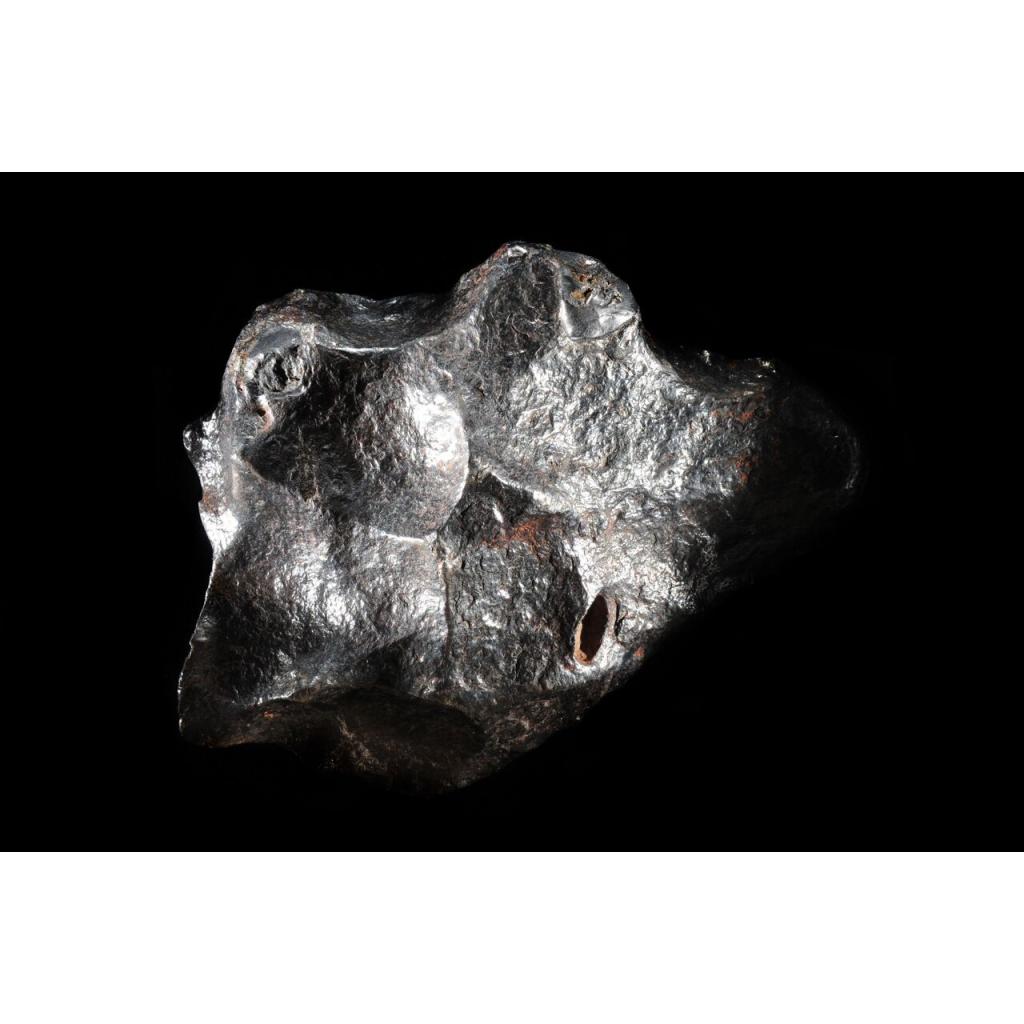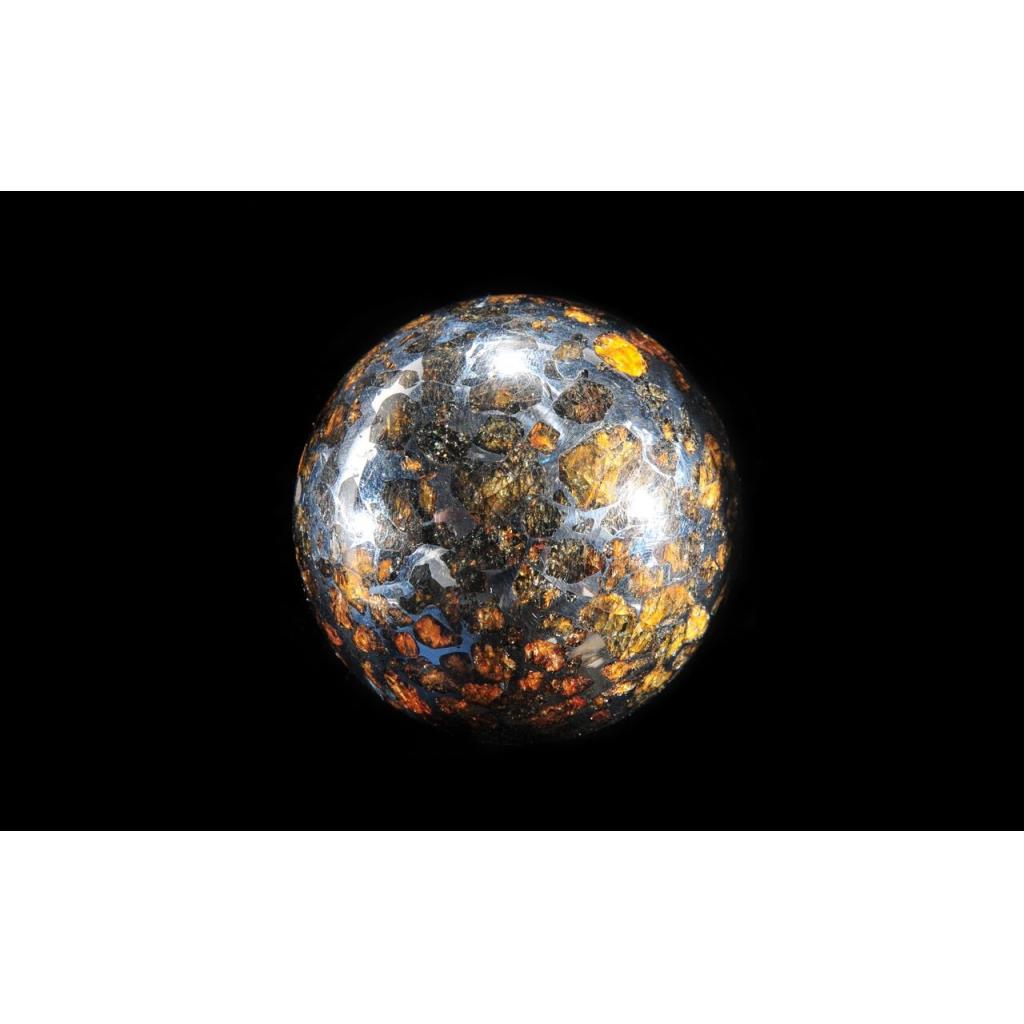The Jbilet Winselwan meteorite, found in Morocco, are a significant discovery that has greatly contributed to our understanding of meteoritics. Classified as a chondrite, these meteorites originate from the Jbilet Winselwan area in the western Sahara Desert. This beautiful Jbilet Winselwan meteorite is rare and beautiful, it weighs .067 grams.
Meteorites are extraterrestrial rocks that survive their journey through Earth’s atmosphere and land on the surface. They provide scientists with invaluable insights into the composition and history of our solar system, often containing materials dating back billions of years. Meteorites come in various types, including iron, stony, and stony-iron, each offering unique clues about their origins and the processes that shaped them. Studying meteorites not only helps unravel mysteries of our cosmic neighborhood but also sheds light on the formation and evolution of planets, including our own.
Chondrites are one of the most common types of meteorites and are composed primarily of silicate minerals and chondrules—tiny, spherical grains formed in the early solar system. The Jbilet Winselwan meteorites are particularly noteworthy due to their unique characteristics and scientific importance.
The discovery of the Jbilet Winselwan meteorites has provided scientists with a rare opportunity to study fresh extraterrestrial material. Their recovery in the western Sahara Desert has sparked interest in meteorite research in Morocco and has led to increased awareness of the importance of meteorites in understanding the origins of our solar system.
Studying the Jbilet Winselwan meteorites offers valuable insights into the processes that shaped our solar system and the nature of extraterrestrial materials. By analyzing their mineralogy, isotopic composition, and organic content, researchers can better understand the conditions prevailing during the formation of celestial bodies like asteroids and planets.
The analysis of the Jbilet Winselwan meteorites contributes to our understanding of meteoritics and planetary science. These extraterrestrial samples serve as tangible remnants of cosmic events, preserving crucial information about the composition and evolution of our solar system.
Moreover, the discovery of the Jbilet Winselwan meteorites holds cultural significance for Morocco and the broader scientific community. It highlights the importance of international collaboration in meteorite research and fosters curiosity and education about the mysteries of the universe.
Stony Meteorites: Witness to Stellar Birth
Comprising approximately 95% of all meteorite falls, stony meteorites, as the name suggests, are primarily composed of silicate minerals. Within this group, there are further subdivisions based on mineral composition and texture, such as chondrites, achondrites, and carbonaceous chondrites.
Chondrites: Among the most common type of meteorites, chondrites are primitive remnants of the early solar system, dating back over 4.5 billion years. They contain small spherical structures called chondrules, which are believed to have formed in the protoplanetary disk around the young Sun. These chondrules are composed of minerals like olivine and pyroxene, encapsulating the conditions of the nascent solar system. The study of chondrites provides valuable information about the processes of planetary accretion and differentiation.

Achondrites: Unlike chondrites, achondrites lack chondrules and exhibit evidence of igneous processing, indicating that they originated from larger planetary bodies with internal differentiation. These meteorites often resemble terrestrial rocks, with mineral compositions similar to basalts and gabbros found on Earth. Achondrites are thought to originate from the crust or mantle of differentiated bodies such as asteroids or even Mars. By analyzing the mineralogy and isotopic signatures of achondrites, scientists gain insights into the geological history and differentiation processes of planetary bodies beyond Earth.
Carbonaceous Chondrites: Renowned for their high carbon content and volatile-rich composition, carbonaceous chondrites are among the most primitive meteorites, containing complex organic molecules and water-bearing minerals. These meteorites offer tantalizing clues about the conditions that prevailed in the early solar system, including the delivery of water and prebiotic molecules to Earth. Scientists believe that carbonaceous chondrites may have played a crucial role in seeding the primordial Earth with the necessary ingredients for life.
Iron Meteorites: Relics of Cosmic Cores
Comprising about 5% of meteorite falls, iron meteorites stand out for their high iron and nickel content, often accompanied by traces of other elements like cobalt and phosphorus. These meteorites are remnants of the cores of differentiated bodies such as asteroids or protoplanets, where intense heat and pressure led to the segregation of metallic alloys.
Octahedrites: Characterized by a distinctive crystalline structure known as a Widmanstätten pattern, octahedrites are the most common type of iron meteorites. This pattern forms as a result of slow cooling over millions of years within the core of a planetary body, allowing nickel-iron crystals to grow into elongated shapes. The presence of the Widmanstätten pattern serves as a signature of extraterrestrial origin and provides insights into the cooling rates and thermal histories of parent bodies.
Hexahedrites: Unlike octahedrites, hexahedrites exhibit a cubic crystal structure and are relatively rare compared to their octahedral counterparts. These meteorites likely formed under different cooling conditions within the cores of larger asteroids or protoplanets. The study of hexahedrites helps scientists understand the diversity of parent bodies in the early solar system and the processes that governed their differentiation.
Ataxites: Ataxites represent a minor subclass of iron meteorites characterized by their high nickel content and lack of a distinct crystalline structure. These meteorites likely originated from the outer regions of planetary cores, where nickel concentrations were higher. The study of ataxites provides valuable information about the chemical composition and thermal evolution of parent bodies, offering clues about the conditions prevailing in the early solar system.
Stony-Iron Meteorites: Bridging the Divide
Stony-iron meteorites, as the name implies, represent a hybrid of stony and iron compositions, with roughly equal proportions of silicate minerals and metallic alloys. These meteorites are thought to originate from the boundary regions between a differentiated body’s mantle and core, where material mixing occurred due to impacts or geological processes.
Pallasites: Gem embedded Nickel Iron:
Pallasites: Pallasites are one of the most visually striking meteorite types, characterized by their beautiful olivine crystals embedded in a metallic matrix. These meteorites likely formed at the interface between the core and mantle of differentiated bodies, where molten metal percolated through fractures and filled cavities within the silicate matrix. The study of pallasites provides insights into the dynamics of core-mantle interactions and the mixing of materials in the early solar system.
Mesosiderites: Mesosiderites are stony-iron meteorites composed of roughly equal parts of silicate minerals and metallic alloys. Unlike pallasites, which exhibit a distinct separation of metal and silicate phases, mesosiderites show evidence of intense brecciation and mixing, indicating violent processes within the parent body. These meteorites likely originated from the crust or mantle of large differentiated bodies, where impacts or tectonic activity led to the commingling of materials.
IAB Irons: IAB iron meteorites represent a transitional group between iron and stony-iron meteorites, exhibiting a mixture of metallic alloys and silicate inclusions. These meteorites often contain complex textures and mineral compositions, suggesting a heterogeneous parent body with a history of geological activity and differentiation. The study of IAB irons provides valuable insights into the processes of planetary formation and differentiation in the early solar system.
Prehistoric 101 (Learn about fossils, minerals, and meteorites)
What is a Meteorite? Nickel Iron
What is a Meteorite?
The Meteoritical Society Database



























